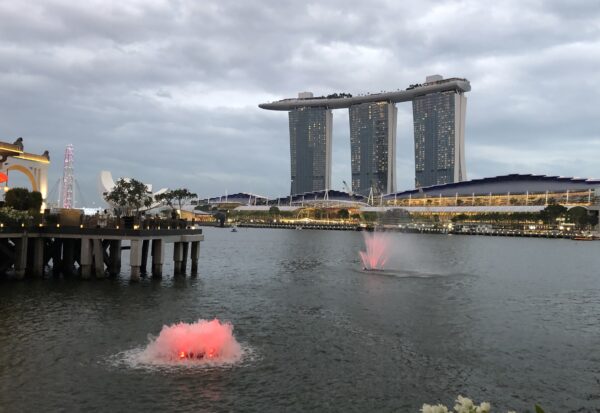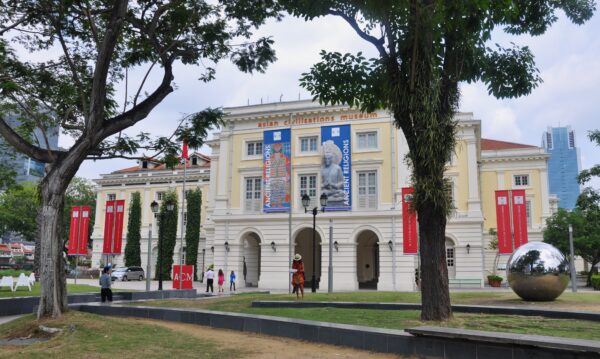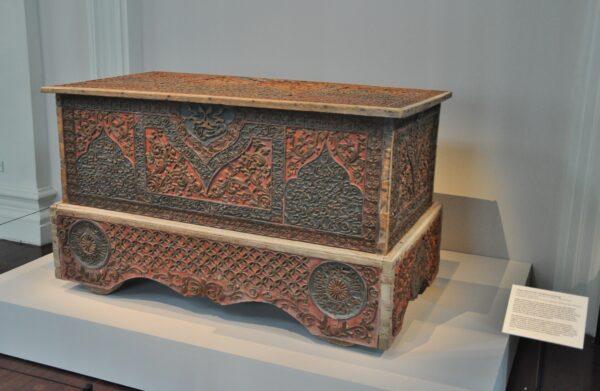Is Anything Value for Money in Singapore Anymore? Try the Museums

Singapore has become one of the world’s most expensive cities to visit, and in which to live. Last March, The Economist named Singapore as the world’s most expensive city in which to live – the ninth time in the last eleven years it has had this dubious honour. This is all-the-more extraordinary considering that Singapore’s sales tax system (GST) is only 9% compared with 20% in each of Paris and London, and 22% in Italy.
The tourist hub has shifted from (the now very dead and unremarkable) Orchard Road to the Marina Bay area with its architectural stunts aimed to appeal to Instagrammers who unwittingly promote via social media Singapore around the world thereby saving the tourism promotion arm of Singapore’s government millions.
Good hotels have become expensive but the quality seems to keep falling. Cost cutting is evident everywhere. No longer is it easy to find great local food in Singapore. Bland chain restaurants, often from the US, dominate many of the central shopping centres, the hawker centres no longer have much to do with genuine hawkers, and the food seems dumbed down with corners cut – all perhaps an inevitable consequence of Singapore’s success and the rising costs which that entails. On top of that, many serving staff are not from Singapore – many are lower-paid guest workers from rural China – and they have little local knowledge about local Malay or Straits Chinese (baba–nonya or peranakan) food. Many for example don’t know what makes a good nasi lemak because its probably not something they have ever tried, and yet a few years ago, this was a standard local breakfast in Singapore. Ask many staff about such local foods and you are likely to be met with a blank look, that’s assuming they have more than a passing knowledge of English. Many are more comfortable with mainland Chinese Mandarin.
In many respects, Singapore has become the Dubai of Southeast Asia, something of an expensive theme park with only a passing linkage to its historical past, much of which has been over-egged for political reasons. The peranakan or Straits Chinese aspect of Singapore is much over-hyped – perhaps in an effort to imply that at least some of Singapore’s ethnic Chinese population has an indigenous aspect – a partial attempted mitigation of the fact that Singapore occupies land that traditionally was Malay.
But there remains at least one good value-for-money thing to do in Singapore, and that is to visit its museums. Right now, the best museums to visit are:
The Asian Civilisations Museum – 1 Empress Pl, Singapore 179555
The Peranakan Museum – 9 Armenian St, Singapore 179941
The National Gallery – 1 St Andrew’s Rd, Singapore 178957
The Indian Heritage Centre – 5 Campbell Lane, Singapore 209924
We have sold to each of these museums and are closely acquainted with each of them. Each is well funded, rarely over-run with visitors, and occupy sophisticated and well-laid out spaces, with world-class objects on display. Ticket prices are modest by developed country standards. Locals pay even less than do visitors which is fair enough given that it is the locals who are the taxpayers who foot the bills for the museums and their staff.
Sadly however, Singapore’s museums are not on the radar for most tourists. Little seems to have been done to promote them and so one can sometimes visit the exhibitions they stage and be the only visitor there. This is in stark contrast to other museums in the region such as Bangkok’s well-attended National Museum, and the National Museum of Indonesia in Jakarta which are nearly always thronging with visitors.
Singapore’s museums often produce excellent catalogues to accompany their exhibitions but strangely, many of these are almost impossible to buy outside Singapore. A lot of money is spent on their research and production but for example rarely are they available on Amazon once they are published. If Singapore’s museums and curators want the rest of the art history world to notice what they are doing then why not make their output more accessible to a worldwide audience? If you’re doing a great job then why hide it?

Above: Singapore’s Asian Civilisations Museum

Above: A large Malay-world box chest carved with Koranic script, which we sold to the Asian Civilisations Museum and which is on permanent display.
____________
Receive our regular catalogues of new stock, provenanced from old UK collections & related sources.
See our entire catalogue of available items with full search function.
______________

